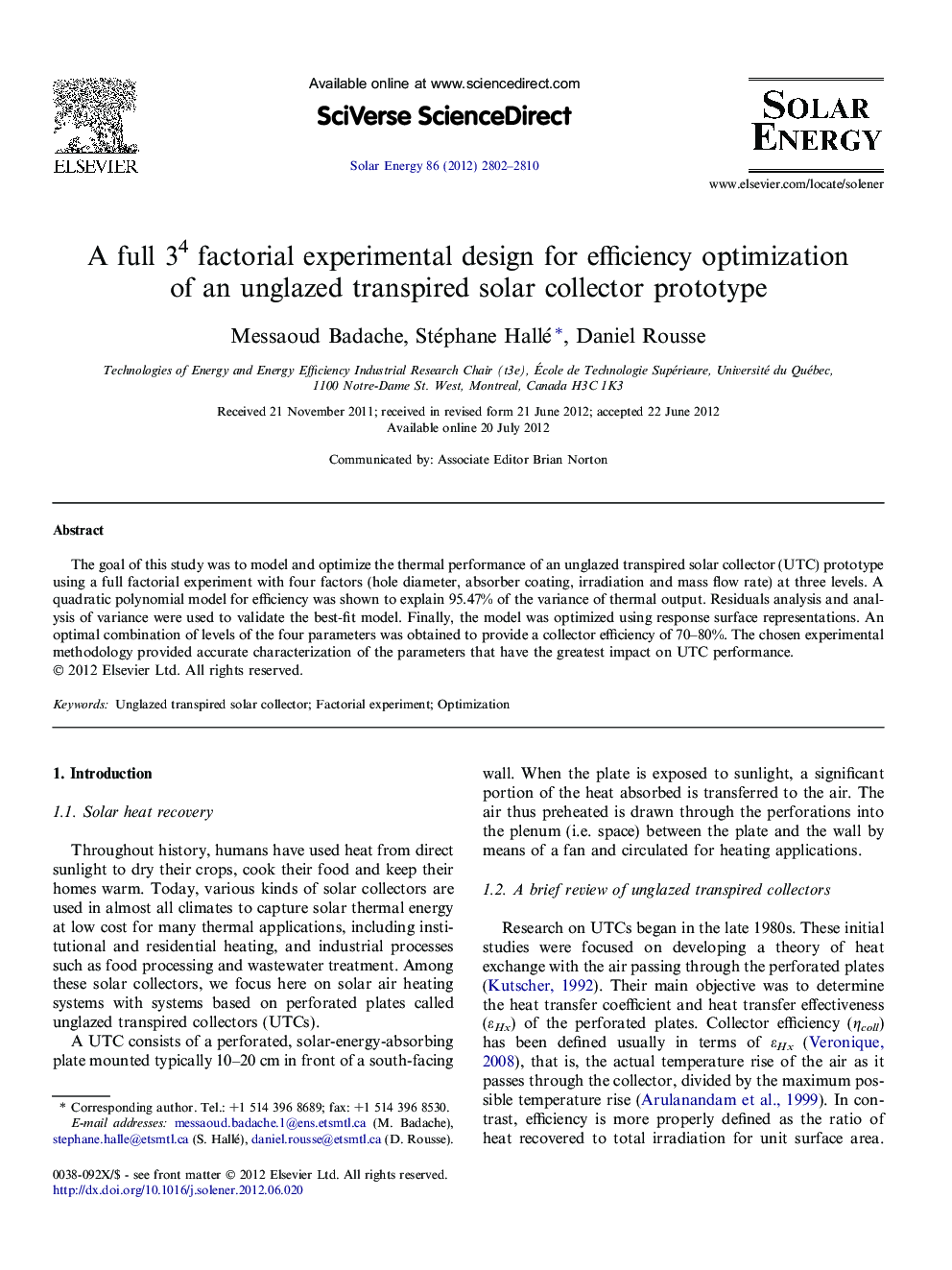| Article ID | Journal | Published Year | Pages | File Type |
|---|---|---|---|---|
| 1550931 | Solar Energy | 2012 | 9 Pages |
The goal of this study was to model and optimize the thermal performance of an unglazed transpired solar collector (UTC) prototype using a full factorial experiment with four factors (hole diameter, absorber coating, irradiation and mass flow rate) at three levels. A quadratic polynomial model for efficiency was shown to explain 95.47% of the variance of thermal output. Residuals analysis and analysis of variance were used to validate the best-fit model. Finally, the model was optimized using response surface representations. An optimal combination of levels of the four parameters was obtained to provide a collector efficiency of 70–80%. The chosen experimental methodology provided accurate characterization of the parameters that have the greatest impact on UTC performance.
► Design experiment methodology is applied to an unglazed transpired solar collector. ► Coating and flow rate are the most significant factors affecting the efficiency. ► Hole diameter is not statistically significant. ► Response surface graph shows the optimal efficiency ranges between 70% and 80%.
